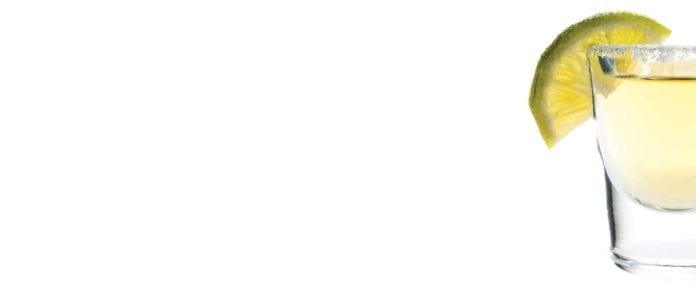Let’s face it…in the past I say tequila and you say Margarita. But that no longer holds true. Tequila, North America’s first distilled drink, is on the rise — in sales, in bars, in cocktails, in quality and in sophistication.
It all started hundreds of years ago when the Aztecs took the sap from the maguey plants and fermented it into a drink first known as pulque, which translates into “Nectar of the Gods.” Pulque would eventually evolve into true tequila in the 1500s, shortly after the Spaniards arrived in Mexico and distilled agave to create Mezcal. The spirit later came to be known as tequila, after a small town in Jalisco, Mexico.
Today, tequila is produced from the fermented sugars of the Tequilana Blue Weber agave plant, primarily in Jalisco, and within limited regions in the states of Guanajuato, Michoacán, Nayarit and Tamaulipas. All authentic, 100- per-cent agave tequilas will have a NOM (Norma Oficial Mexicana) identifier on the bottle, which ensure governance of agave harvesting, production, bottling and exporting.
Canadian consumers are clamouring for the higher quality 100-per-cent agave tequilas according to the statistics from the Cámara Nacional de la Industria Tequilera (CNIT), the national chamber of the tequila industry in Mexico. In 2014, 921,000 litres of tequila were exported to Canada (at 40 per cent alc. vol.), which is a 14-per- cent increase compared to 2013. More tellingly, the value of the tequila exports to our country is US$ 5.4 million, up 36 per cent compared to 2013.
“The tequila category is growing in almost every province across the country, with Ontario and B.C. as the main drivers (up eight per cent over last year),” says Kim Creighton, brand manager at Pernod Ricard/Corby, which represent the Tequila Avion and Olmeca Tequila brands. “Premium 100- per-cent Agave tequila is driving this growth.”
More than 140 companies are currently authorized to produce tequila, of which 68 producers are members of CNIT (and responsible for 80 per cent of the total production). The combined companies offer more than 1,300 different brands bottled in Mexico and 250 brands that have been created and/or developed outside of Mexico.
The major styles are the traditional Blanco (white), a clear spirit most often bottled straight from distillation, and Reposado (rested), aged in any size oak barrel, from two months to one year. Añejo (aged) is produced from aging a minimum of one year to no more than three years, in small oak barrels. Extra Añejo (extra-aged) is a relatively new category for any tequilas aged over three years.
Añejo Restaurant in Calgary has more than 230 skus on its tequila wall, which partner Jay MacRaild believes to be the largest on premise collection in Canada. “[Opening] Añejo was a gamble,” he said. “Nobody was doing more than four to five tequila products on their back bars and here we were ordering cases of 200-plus products and leveraging our future on a spirit most people associate with throwing up in high school.”
A number of the newer brands to come on stream have a real cachet. Rock and Roll Hall of Famer Sammy Hagar launched Cabo Wabo tequila, inspired by his Cabo Wabo nightclub, which opened in Cabos San Lucas in 1990. Casamigos is an independent brand owned by founders Rande Gerber, actor George Clooney and Mike Meldman.
Maestro Dobel Tequila is a new product in Canada and is the world’s first clear multi-aged tequila — a rule-defying blend of Extra-Añejo, Añejo and Reposado tequila, aged in European oak barrels and double filtered. Only the most traditional production methods are used. The agave used in Maestro Dobel Tequila is roasted twice as long as other tequilas to ensure a better conversion of sugars, which yields a higher quality of tequila. It is complex and unique with the character of aged tequila and the smoothness of a silver tequila.
“The tequila consumer is indeed changing,” said John Andersen, brand manager for Lifestyle Brands, Campari Canada (owners of Cabo Wabo and Espolon tequila). “The spirit is being adopted more and more frequently by mixologists. Tequila-based cocktails, other than Margaritas, are becoming commonplace on menus at trendy bars and restaurants.”
Some examples showing up on menus are the Cucumber Jalapeño Margarita, a classic Paloma (tequila, grapefruit juice, lemon juice), In Love with Coconut (Milagro Reposado, Ancho Reyes, fresh lime juice, coconut syrup, ginger beer, garnished with roasted coconut rim), The Freshest Sangria (Milagro Silver, fresh lime juice, grapefruit juice, grenadine and serrano peppers) and Casamigos Bloody Amigo (a Bloody Mary made with tequila).
Putting money behind this trend is 1800 Tequila, a major sponsor of Made with Love — Canada’s most extravagant cocktail competition. 1800 Tequila’s marketing strategy in Canada focuses on integrating the product into exceptional and creative cocktails, thus exposing the product to top bartenders and mixology enthusiasts across the country.
“Lots of high-end tequila bars are popping up in the coolest parts of cities across Canada,” says Richardson. “Places like Cuchillo in Gastown in Vancouver, to Añejo on 4th street in Calgary, the brand new Merchant Kitchen in the Exchange in Winnipeg that has Casamigos on Tap, to El Catrin in the distillery in Toronto — all have a huge selection of tequila, incredible handcrafted cocktails and top notch Mexican/Latin American-style food to match. These places didn’t exist a couple years ago and they are hugely successful — it’s clearly a fast growing trend in Canada.”
Written By: Margaret Swaine
Volume 48, Number 9


















